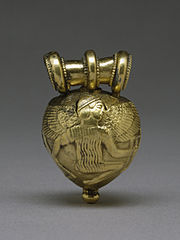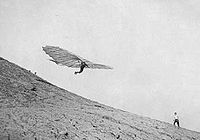Early flying machines
[10] The Andalusian scientist Abbas ibn Firnas (810–887 AD) reportedly made a glide in Córdoba, Spain, covering his body with vulture feathers and attaching two wings to his arms.[23] The philosopher Ge Hong's book, the Baopuzi (Master Who Embraces Simplicity), written around 317, describes the apocryphal use of a possible rotor in aircraft: "Some have made flying cars [feiche 飛車] with wood from the inner part of the jujube tree, using ox-leather (straps) fastened to returning blades so as to set the machine in motion.In his 1250 book De mirabili potestate artis et naturae (Secrets of Art and Nature), the Englishman Roger Bacon predicted future designs for a balloon filled with an unspecified aether as well as a man-powered ornithopter,[29] claiming to know someone who had invented the latter.From the last years of the 15th century onwards, Leonardo wrote about and sketched many designs for flying machines and mechanisms, including ornithopters, fixed-wing gliders, rotorcraft and parachutes.[33] In an essay titled Sul volo (On flight), he describes a flying machine called "the bird" which he built from starched linen, leather joints, and raw silk thongs.On 15 May 1793, the Spanish inventor Diego Marín Aguilera jumped with his glider from the highest part of the castle of Coruña del Conde, reaching a height of about 5 or 6 m,[clarification needed] and gliding for about 360 metres.On 8 August 1709, in Lisbon, he made a small hot-air balloon of paper with a fire burning beneath it, lifting it about 4 metres (13 ft) in front of king John V and the Portuguese court.[44] On 27 December 1905, Neil MacDearmid was carried aloft in Baddeck, Nova Scotia, Canada by a large box kite named the Frost King, designed by Alexander Graham Bell.In 1907, Cody next fitted an aircraft engine to a modified unmanned "power-kite", the precursor to his later aeroplanes, and flew it inside the Balloon Shed, along a wire suspended from poles, before the Prince and Princess of Wales.[49] Italian inventor, Tito Livio Burattini, invited by the Polish King Władysław IV to his court in Warsaw, built a model aircraft with four fixed glider wings in 1647.It is certain that Gusmão was working on this principle at the public exhibition he gave before the Court on 8 August 1709, in the hall of the Casa da Índia in Lisbon, when he propelled a ball to the roof by combustion.The Editor of the Royal Aeronautical Society journal wrote in 1910 that Swedenborg's design was "...the first rational proposal for a flying machine of the aeroplance [heavier-than-air] type..."[54] Meanwhile, rotorcraft were not wholly forgotten.The fiasco did have an upside: George Cayley, also taken in by the illustrations, was spurred to publish his findings to date "for the sake of giving a little more dignity to a subject bordering upon the ludicrous in public estimation", and the modern era of aviation was born.He argued that manpower alone was insufficient, and while no suitable power source was yet available he discussed the possibilities and even described the operating principle of the internal combustion engine using a gas and air mixture.[74] Starting in 1857, Félix du Temple and his brother Luis built several models using a clockwork mechanism as a power source and later a small steam engine.A tailless monoplane with a single vertical fin and twin tractor airscrews, it also featured hinged rear elevator and rudder surfaces, retractable undercarriage and a fully enclosed, instrumented cockpit.Its purpose was for research and it was neither aerodynamically stable nor controllable, so it ran on a 1,800 feet (550 m) track with a second set of restraining rails to prevent it from lifting off, somewhat in the manner of a roller coaster.In Britain, Percy Pilcher, who had worked for Maxim and had built and successfully flown several gliders during the mid to late 1890s, constructed a prototype powered aircraft in 1899 which, recent research has shown, would have been capable of flight.Publications, particularly Octave Chanute's Progress in Flying Machines of 1894 and James Means' The Problem of Manflight (1894) and Aeronautical Annuals (1895–1897) helped bring current research and events to a wider audience.In 1905, Daniel Maloney was carried by balloon in a tandem-wing glider designed by John Montgomery to an altitude of 4,000 feet (1,200 m) before being released, gliding down and landing at a predetermined location as part of a large public demonstration of aerial flight at Santa Clara, California.Seeking answers, the Wrights constructed their own wind tunnel and equipped it with a sophisticated measuring device to calculate lift and drag of 200 different model-size wing designs they created.The Flyer III became the first practical aircraft (though without wheels and using a launching device), flying consistently under full control and bringing its pilot back to the starting point safely and landing without damage.In Europe, Léon Levavasseur's Antoinette 8V pioneering example of the V-8 engine format, first patented in 1902, dominated flight for several years after it was introduced in 1906, powering many notable craft of that era.The Anzani 3-cylinder semi-radial or fan engine of 1909 (also built in a true, 120° cylinder angle radial form) developed only 25 horsepower (19 kW) but was much lighter than the Antoinette, and was chosen by Louis Blériot for his cross-Channel flight.Although this type had been introduced as long ago as 1887 by Lawrence Hargrave, improvements made to the Gnome created a robust, relatively reliable and lightweight design which revolutionised aviation and would see continuous development over the next ten years.More successful was the Deperdussin braced monoplane, which won the inaugural 1913 Schneider Trophy race flown by Maurice Prévost, completing 28 circuits of the 10 km (6.2 mi) course with an average speed of 73.63 kilometres per hour (45.75 mph).His tailless design reached its peak with the D.8 which was manufactured under license in France by Nieuport and in the US as the Burgess-Dunne, however it was rejected as a practical warplane by the British Army, in which Dunne was an officer, because it was too stable and hence not manoeuvrable enough in battle.The British designer John Cyril Porte invented the technique of placing a step in the bottom of the aircraft to break the suction, and this was incorporated in the 1914 Curtiss Model H.[citation needed] In 1909, aeroplanes remained frail and of little practical use.[125] The need to save weight meant that most aircraft were structurally fragile, and not infrequently broke up in flight especially when performing violent manoeuvres, such as pulling out of a steep dive, which would be required in combat.Other designs, covering a wide variety of forms, included Pomés and De la Pauze (1871), Pénaud, Achenbach (1874), Dieuaide (1887), Melikoff (1877), Forlanini (1877), Castel (1878), and Dandrieux (1878–79).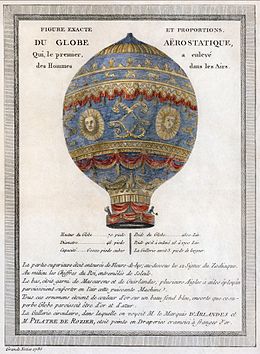
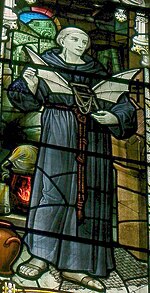
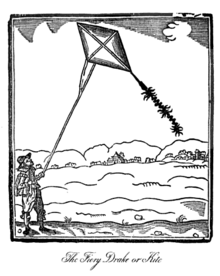
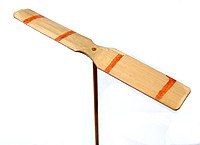


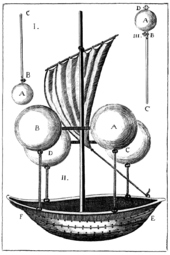
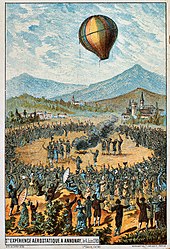

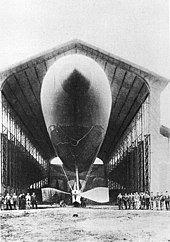
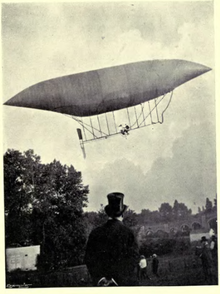
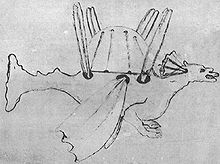


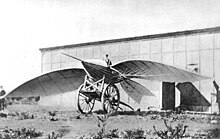
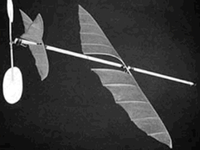




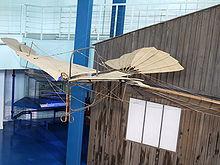


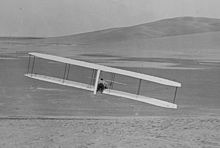
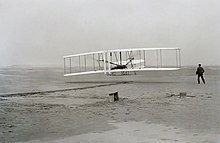


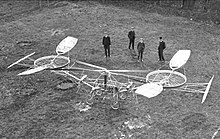

History of aviationEarly FlightFlying machine (disambiguation)Montgolfier brothersaircraftaeroplaneEtruscanIcarusGreek legendDaedalusIndianVimanaEzekiel's ChariotMug RuithSimon Magusmagic carpetsKing BladudEilmer of MalmesburyAulus GelliusArchytasWang MangYuan HuangtouAndalusianAbbas ibn FirnasCórdoba, SpainAlgerianAhmed Mohammed al-MaqqariMuhammad I of CórdobaLynn Townsend White, Jr.William of MalmesburyThe Mysteryes of Nature and ArtLu Banfighter kitePolynesiaNew ZealandMan-carrying kitesMarco PoloBamboo-copterGe HongBaopuzijujube treesky lanternhot air balloonJoseph NeedhamZhuge Liangdriven by man-powerRoger BaconornithopterLeonardo da Vinci"aerial screw"aerodynamicsIsaac Newtonthird law of motionhang gliderCodex Atlanticusaerial screwNurembergJohn DamianStirling Castlejet flightOttoman EmpireLagâri Hasan ÇelebirocketFrancis WillughbyDiego Marín AguileragliderCoruña del CondeAlbrecht BerblingerDanubeHistory of ballooningGalileo GalileiCyrano de BergeracFrancesco Lana de Terzisea levelairshipBartolomeu de GusmãoLisbonJohn VPortuguesehydrogenJoseph BlackJacques CharlesAnnonayProfessor Jacques CharlesRobert brothersFolie TitonJean-François Pilâtre de RozierJean-Baptiste RéveillonMarquis François d'ArlandesNicolas-Louis RobertJardin des TuileriesNesles-la-Valléegas balloonJean Baptiste MeusnierballonetBeuvryJean Pierre Blanchardgoldbeaters skincoal gasAmerican Civil WarUnion Army Balloon CorpsArmy of the PotomacBoer WarHenri GiffardTrappesGiffard dirigiblenon-rigid airshipsteam engineSolomon AndrewsCharles RenardArthur Constantin KrebsLa FranceLangleySantos-DumontFerdinand von ZeppelinZeppelinLuftschiff Zeppelin 1BodenseeAlberto Santos-DumontdirigiblesDeutsch de la Meurthe prizeLeonardo da Vinci'sparachuteFausto VeranzioLouis-Sébastien Lenormandmeteorology
